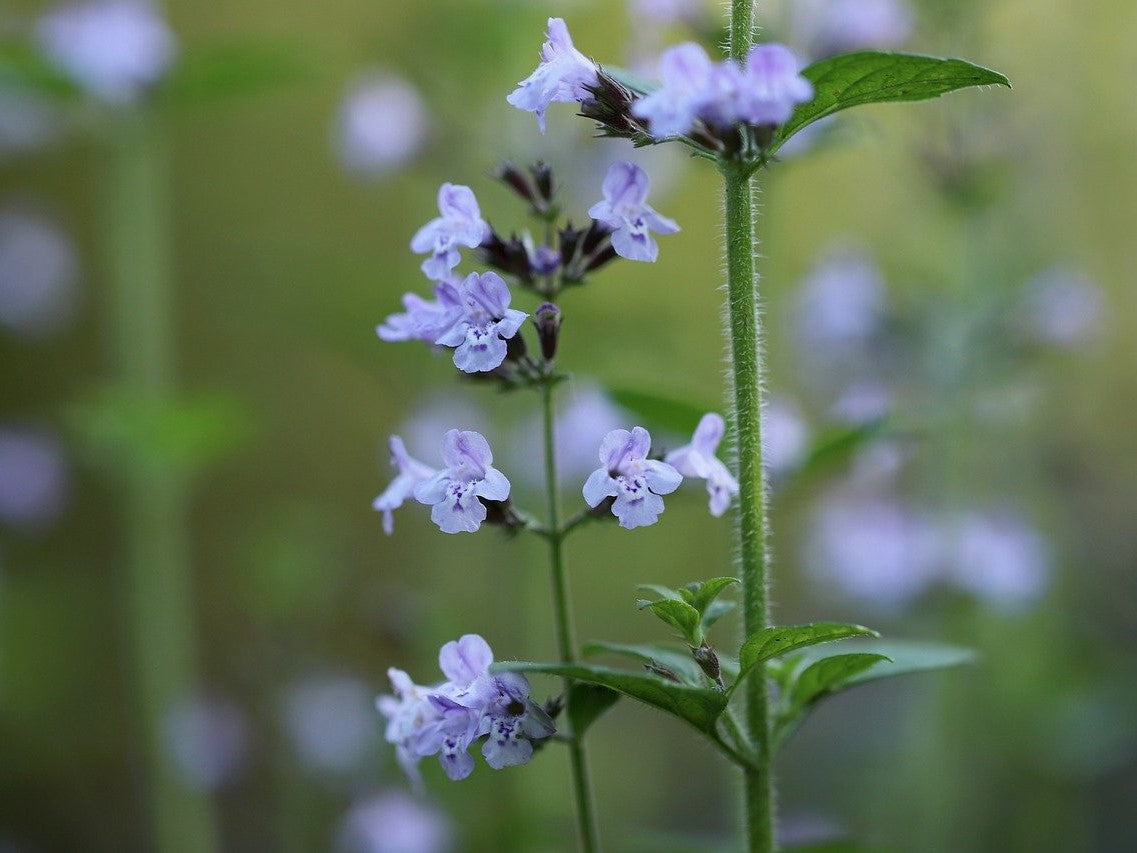Junior Walker
Common Name: calamint
Type: Herbaceous perennial
Family: Lamiaceae
Native Range: Southern Europe to Great Britain
Zone: 5 to 7
Height: 1.00 to 1.50 feet
Spread: 1.00 to 2.00 feet
Bloom Time: June to September
Bloom Description: Lilac to white
Sun: Full sun
Water: Dry to medium
Maintenance: Low
Suggested Use: Ground Cover, Naturalize
Flower: Showy, Fragrant
Leaf: Fragrant
Tolerate: Drought, Erosion, Dry Soil, Shallow-Rocky Soil
Easily grown in slightly acidic to slightly alkaline, dry to medium moisture, well-drained soils in full sun. Prefers evenly moist soils, but tolerates some drought. Tolerates light shade in the afternoon. May spread in the garden by rhizomes and/or self-seeding to form an interesting ground cover. Stems may root at the nodes where they touch the ground. Shear or cut back plants after flowering to tidy the planting, to remove unsightly foliage and/or to prevent any unwanted self-seeding. Easily started from seed. Plants generally do not perform well in the deep South below USDA Zone 7.
For more information visit: Missouri Botanical Garden
Type: Herbaceous perennial
Family: Lamiaceae
Native Range: Southern Europe to Great Britain
Zone: 5 to 7
Height: 1.00 to 1.50 feet
Spread: 1.00 to 2.00 feet
Bloom Time: June to September
Bloom Description: Lilac to white
Sun: Full sun
Water: Dry to medium
Maintenance: Low
Suggested Use: Ground Cover, Naturalize
Flower: Showy, Fragrant
Leaf: Fragrant
Tolerate: Drought, Erosion, Dry Soil, Shallow-Rocky Soil
Easily grown in slightly acidic to slightly alkaline, dry to medium moisture, well-drained soils in full sun. Prefers evenly moist soils, but tolerates some drought. Tolerates light shade in the afternoon. May spread in the garden by rhizomes and/or self-seeding to form an interesting ground cover. Stems may root at the nodes where they touch the ground. Shear or cut back plants after flowering to tidy the planting, to remove unsightly foliage and/or to prevent any unwanted self-seeding. Easily started from seed. Plants generally do not perform well in the deep South below USDA Zone 7.
For more information visit: Missouri Botanical Garden


